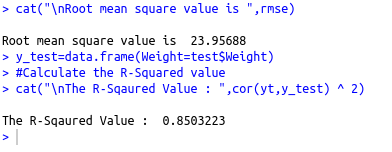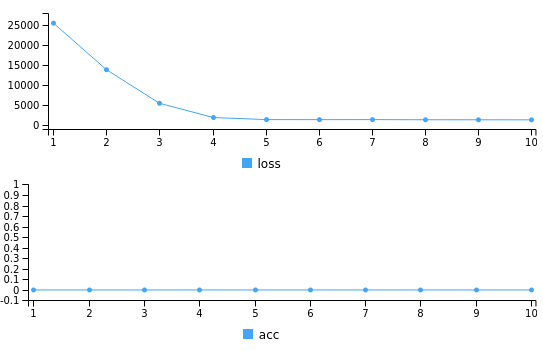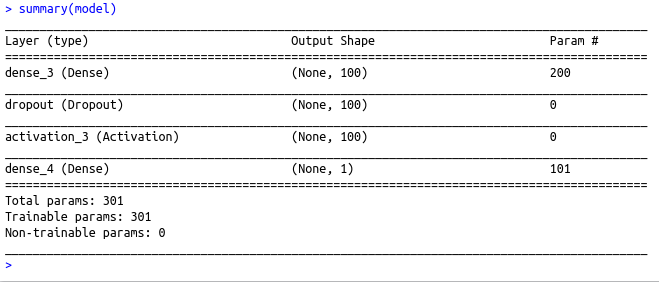To perform linear regression in R using deep neural network
library(keras)
layer_activation() – Activation function for the layer
compile() – To compile the model
fit() – To fit the model using the train set
predict() – To predict using the test set
Load the necessary libraries
Load the data set
Convert the categorical variables to equivalent numeric classes
Split the data set as train set and test set
Initialize the keras sequential model
Build the model with input layers,hidden layers and output layer as per the data size along with the activation function(here 1 I/P layer with relu activation and 1 O/P layer with no activation(for linear))
Compile the model with required loss,metrics and optimizer(here loss=mean square error,optimizer=adam,metrics=accuracy)
Fit the model using the train set
Predict using the test set
Evaluate the metrics
library(caret)
library(keras)
data=read.csv(‘/…/weight-height.csv’)
#Setting seed to reproduce results of random sampling data
set.seed(100)
#Train set
train_ind<-createDataPartition(data$Weight,p=0.8,list=FALSE) train_data<-data[train_ind,] xtrain=train_data[,2] ytrain=train_data$Weight #Test set test=data[-train_ind,] xtest=test$Height ytest=test$Weight #defining a keras sequential model model <- keras_model_sequential() #Define a neural network with 1 input layer with 100 neurons and 1 output layer model %>%
layer_dense(units = 100, input_shape = 1) %>%
layer_dropout(rate=0.4)%>%
layer_activation(activation = ‘relu’) %>%
layer_dense(units = 1)
#compiling the defined model with metric = accuracy and optimiser as adam.
model %>% compile(
loss = ‘mean_squared_error’,
optimizer = ‘adam’,
metrics = ‘accuracy’
)
#Summary of the model
summary(model)
#fitting the model on the training dataset
model %>% fit(xtrain, ytrain, epochs = 10, batch_size = 128)
#Predict using the Test data
yt=predict(model,xtest)
#Calculate the RMSE value
e=(ytest)-(yt)
err=e*e
rmse=sqrt(mean(err))
cat(“\nRoot mean square value is “,rmse)
y_test=data.frame(Weight=test$Weight)
#Calculate the R-Squared value
cat(“\nThe R-Sqaured Value : “,cor(yt,y_test) ^ 2)


